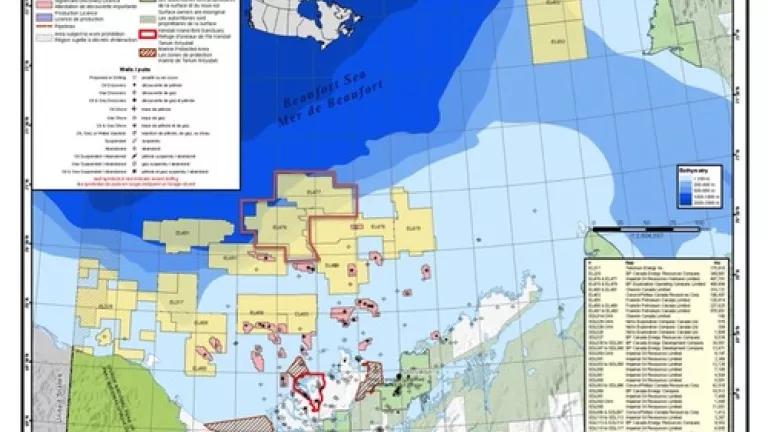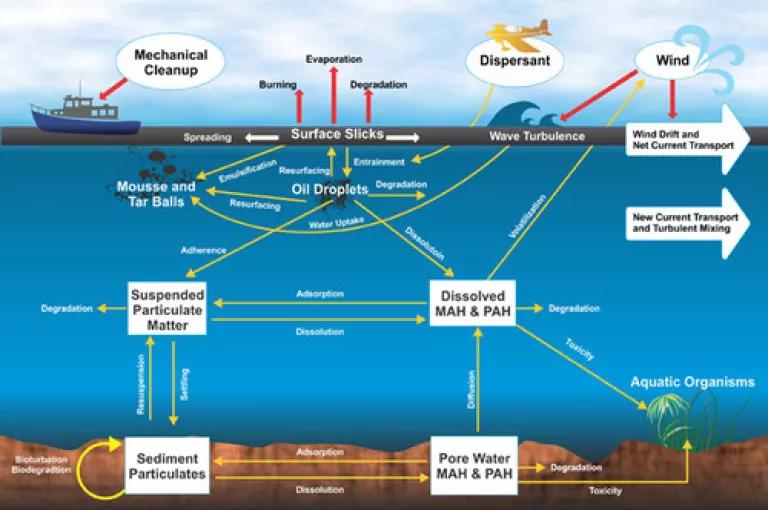Ready for Prime Time? Arctic Resource Developers Slow Their Push as Regulators Begin to Ask Tough Questions

Written by Josh Axelrod, Law and Policy Consultant for the Canada Project
One hundred and seventy-five kilometers north of the Hamlet of Tuktoyaktuk, Northwest Territories, an ExxonMobil subsidiary—Canada’s Imperial Oil—is spearheading the oil industry’s latest effort to explore deep water oil and gas resources in the Arctic Ocean. Now, nearly two years after the project was first announced publicly, the reality of the risks such a project poses to local communities and the environment are catching up with Imperial and its partners. During the past few months, several developments now make it clear that Imperial’s hope to begin drilling during the summer of 2020 may be as far fetched as its continuing assertion that essential well safety measures are unnecessary in deep Arctic waters.
Source: Aboriginal Affairs and Northern Development—Map showing current exploratory licenses in Canada’s Beaufort Sea.
After granting Imperial Oil’s (and Chevron’s) late-spring request for an accelerated hearing on the company’s well control system, Canada’s National Energy Board (NEB) released a finalized list of issues that it will consider during the hearing. Though the list is relatively vague, two key issues appear to have placed a roadblock on Imperial’s forward progress. First, the NEB upheld its initial proposal to require Imperial to explain how its well control proposal would mitigate the threats posed by a worst case scenario—a requirement that will require Imperial to define such a scenario in the first place (something the company publicly stated that it was not interested in doing). Second, following public comment, the NEB added an additional issue to its list which will require Imperial to specifically describe how unique Arctic conditions will impact the effectiveness of their proposed well control system.

Source: RPS ASA—diagram of key factors affecting the scope and impact of an underwater oil spill.
Though Imperial Oil had stated in its letter requesting an accelerated hearing before the NEB that it was ready to propose an alternative well control system by Q3 2014, the complexity and risk of what they hope to do has caught up with them. In a letter to the NEB submitted at the end of October, Imperial stated that it would no longer be able to meet its own timeline, and would delay submitting its well control proposal until at least Q3 2015. The letter cites the challenge of describing a worst case scenario and how its proposal will mitigate the risk of such a scenario taking place as the key reason for its delay.

Source: WWF-Canada/RPS-ASA—Map depicting surface oiling probabilities during a major deep water spill.
Now, two weeks later, the Environmental Impact Review Board (EIRB)—the regulatory body that reviews projects proposed within the Inuvialuit Settlement Region of the Northwest Territories—has published its own requirements for Imperial as the company crafts a worst case scenario to determine its potential liability to local communities in the event of a disaster. These requirements, which elaborate the various elements that Imperial must consider, are tough and forward-looking. If Imperial gives them adequate attention, they will provide the EIRB, impacted communities, and the general public with a critical snapshot of just how bad things could get if something were to go wrong in the Beaufort Sea.
The risks of deep water offshore oil and gas exploration are many and its rewards remain unclear at best. As companies continue to eye resource development in the far North, impacted communities, regulators, and the general public should remain wary of industry claims that such development can be done safely and with great benefit to local, regional, and national economies. Spill modeling in the region has already shown the sheer scale that a large spill could reach, and further study will likely reveal the extraordinary fragility of the ecosystems that such a spill would impact. These factors should encourage extreme caution, thorough study, and healthy skepticism of whether deep water oil and gas development anywhere in the Arctic is a risk that should ever be taken on.
